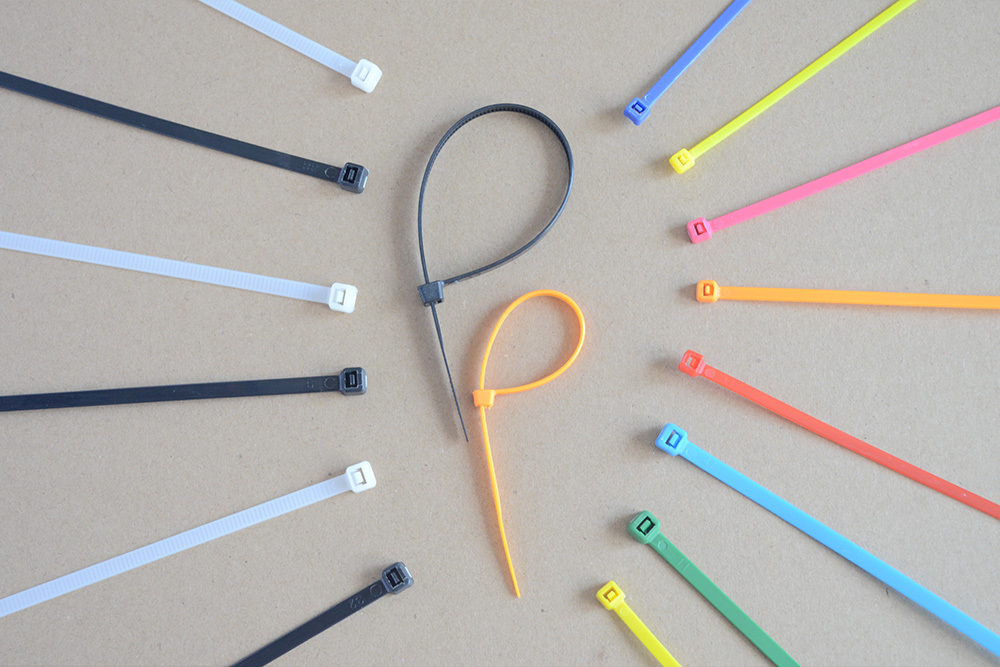11
2025
-
07
How many years can plastic cable ties be used?
Author:
Service Life of Plastic Cable Ties: Factors Influencing Longevity and Practical Considerations
Plastic cable ties, while designed for durability, have a service life that varies significantly based on environmental conditions, material quality, and application demands. Understanding these factors helps users optimize their usage and anticipate replacement timelines.
Environmental Conditions: The Primary Determinant of Lifespan
The most critical factor affecting the lifespan of plastic cable ties is the environment in which they are used. In controlled indoor settings with stable temperatures and moderate humidity, standard nylon 66 ties can last 5–10 years or more. These conditions minimize exposure to elements that accelerate degradation, such as UV radiation, moisture, and extreme temperatures.
In contrast, outdoor applications drastically reduce longevity. UV rays from sunlight break down the polymer chains in nylon, causing brittleness and discoloration. For example, ties used in outdoor solar installations or construction sites may last only 1–3 years before requiring replacement. Similarly, high-humidity environments, such as coastal areas or industrial settings with frequent condensation, can promote mold growth or chemical reactions that weaken the material over time.
Temperature fluctuations also play a role. Nylon 66 retains its mechanical properties between -40°C (-40°F) and 85°C (185°F), but prolonged exposure to temperatures outside this range can cause permanent damage. In freezing conditions, ties may become brittle and crack under stress, while excessive heat can soften the material, reducing tensile strength.
Material Quality and Manufacturing Standards
The quality of the nylon or polymer used in cable ties directly impacts their lifespan. High-grade nylon 66, reinforced with additives like UV stabilizers or flame retardants, can extend service life by resisting environmental stressors. For instance, ties with UV protection are essential for outdoor use, as they maintain flexibility and strength despite prolonged sun exposure.
Manufacturing processes also influence durability. Ties produced with precise injection molding techniques and strict quality control are less likely to have internal defects or weak points that could lead to premature failure. Conversely, ties made from recycled materials or lower-grade polymers may degrade faster, even under ideal conditions.
Industry-specific standards provide a benchmark for quality. For example, ties used in aerospace or automotive applications often meet stringent requirements for tensile strength, flame resistance, and chemical stability, ensuring they perform reliably for decades.
Application Type and Mechanical Stress
The intended use of plastic cable ties significantly affects their lifespan. Light-duty applications, such as organizing household cables or bundling soft materials, place minimal stress on the ties, allowing them to last for years without issue. Heavy-duty applications, such as securing automotive wiring harnesses or industrial equipment, subject ties to constant vibration, pulling forces, and abrasion, which can wear them down over time.
Mechanical stress during installation also matters. Over-tightening ties can cause permanent deformation or stress fractures, reducing their load-bearing capacity. Using tools like tensioners or cutters designed for cable ties ensures proper installation without damaging the material.
In scenarios where ties are subjected to repeated adjustments or reuse, their lifespan may be shorter. While some ties are designed for releasability, frequent opening and closing can weaken the locking mechanism or cause fatigue in the strap, leading to failure.
Maintenance and Storage Practices
Proper storage and maintenance can prolong the life of plastic cable ties. Storing ties in a cool, dry place away from direct sunlight prevents premature aging caused by UV exposure or thermal degradation. Using airtight containers or desiccant packs in humid environments helps maintain optimal moisture levels, reducing the risk of mold or chemical reactions.
Regular inspections are crucial for applications where tie failure could have serious consequences, such as in electrical installations or structural supports. Checking for signs of cracking, discoloration, or reduced tension allows users to replace ties before they fail completely.
For long-term projects, selecting ties with a higher safety margin—such as those rated for greater tensile strength than required—can account for unexpected stress or environmental changes. Additionally, choosing ties with color-coding or labeling systems simplifies identification and replacement during maintenance cycles.
The service life of plastic cable ties is not fixed but depends on a combination of environmental, material, and usage factors. By selecting high-quality ties, installing them correctly, and storing them properly, users can maximize their longevity and ensure reliable performance in diverse applications. Whether securing cables in a home office or supporting critical infrastructure, understanding these dynamics helps users make informed decisions about tie selection and maintenance.
plastic cable ties
Hot News
2025-07-11
How many years can plastic cable ties be used?
Plastic cable ties, while designed for durability, have a service life that varies significantly based on environmental conditions, material quality, and application demands. Understanding these factors helps users optimize their usage and anticipate replacement timelines.
2025-07-11
Introduction to the features of plastic cable ties
Plastic cable ties, also known as zip ties, are ubiquitous tools valued for their simplicity and effectiveness in securing objects.
2025-07-10
Storage precautions for plastic cable ties
While plastic cable ties do not have a strict expiration date, their performance can degrade over time, especially if stored improperly. To minimize waste and ensure reliability, adopt a first-in, first-out (FIFO) inventory system. This practice ensures older stock is used before newer batches, reducing the likelihood of ties sitting unused for extended periods.
2025-07-10
Introduction to the advantages of plastic cable ties
The Multifaceted Advantages of Plastic Cable Ties: From Industrial Strength to Everyday Innovation

